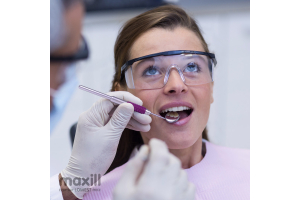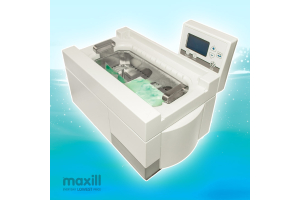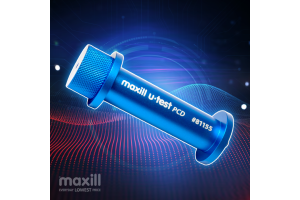Controlling the Chain of Infection in Your Dental Office

From dental assistants, hygienists, dentists, and dental administration we are all considered dental health care professionals and have different contacts with patients. Every patient contact experience from registration of the patient at the front desk to hands on dental treatment within the operatory we can all be exposed to pathogens. Pathogenic microorganisms are those that are able to cause disease. The number one pathogen transmission is from patient to healthcare worker, but we also don’t want our patients to worry that they are leaving an appointment with more than they came in with. The transfer of these microorganisms must occur in a sequence; this sequence is what epidemiologists call the chain of infection. The pathogen needs a reservoir or a source to survive and a susceptible host to begin the infection process. This chain of infection transmission can be broken by integrating controls or methods that mitigate the pathway of disease spread from person to person. This sequence must be in order for the disease to occur. The way to stop disease transmission is to interrupt this chain at any link. Knowledge of the exit and entry portals and transmission modes provides a basis for determining appropriate control measures.
Controlling the Chain of Infection
| Link in the Chain of Infection | Definition and Description | Appropriate Controls |
|---|---|---|
|
The First Link: Infectious agent |
A pathogen or infectious agent is the first link in the chain of infections. These infectious agents in our dental practices include viruses, bacteria and fungi. How the organism is able to cause disease depends on the number of organisms or the virulence of that organism. For example, i.e., smallpox is extremely virulent and will affect almost everyone who is exposed as compared to TB which usually infects only a small number of people |
|
|
The Second Link: Reservoir |
The reservoir link is any person, animal, soil, water, or substance where the infectious agent normally lives and multiplies. This is the important focus of the reservoir: The infectious agent depends on the reservoir for survival. Contact surfaces and air are not reservoirs, the pathogen can be sustained here for a while, but it cannot live and multiply here. However, the transfer of pathogens from these inanimate surfaces to a host or reservoir could occur. The most common dental office pathogen reservoirs are the oral environment, the nasopharynx, and waterlines. |
|
|
The Third Link: Portal of Exit |
The next link in the chain of infection is the portal of exit, in other words, how the infectious agent leaves the reservoir. This occurs through aerosols, open wounds and splatter of bodily fluids including coughing, sneezing, and saliva by way of the nose or mouth. The potential for transmission of infectious agents increases in dental offices due to the aerosols produced from high-speed handpieces, air-water syringes and ultrasonic units and contaminated water lines. Influenza, legionnaires disease and the coronavirus are of particular concern. These viruses are spread through aerosols, droplets, and contact with respiratory fluids from infected people or water. Bloodborne contamination can occur by exposure to infectious material and pathogens through non-intact skin and mucous membranes. The highest infectious risk of this type is associated with accidental needlestick or sharps exposure in the dental setting. Insufficient or improperly sterilized dental instruments are also a means of bloodborne pathogen transmission. |
|
|
The Fourth Link: Mode of Transmission |
Once the pathogen has exited the reservoir it needs a mode of transmission to transfer into a host. The mode of transmission from the portal of exit is by indirect/direct physical contact, ingestion, or inhalation. These pathogenic microorganisms enter the host through a portal of entry including broken skin, the respiratory system through inhalation, and the digestive system by ingestion or blood. Pathogens often enter the body of the host through the same route that they exited the reservoir, for example, airborne pathogens from a sneeze enter the nose of another person. |
|
|
The Fifth Link: Portal of Entry |
These pathogenic microorganisms enter the host through a portal of entry including broken skin, the respiratory system through inhalation, and the digestive system by ingestion or blood. Pathogens often enter the body of the host through the same route that they exited the reservoir, for example, airborne pathogens from a sneeze enter the nose of another person. |
|
|
The Sixth Link: Susceptible Host |
The last link in the chain involves the susceptible host. The susceptible host is someone that is at risk of infection. Infection does not occur automatically when the pathogen enters the body of a person whose immune system is functioning properly. |
|
This table is adapted from HERE
The way to stop the spread of disease from person to person is by interrupting the chain at any link and instituting proper infection control protocols and training within your office.









